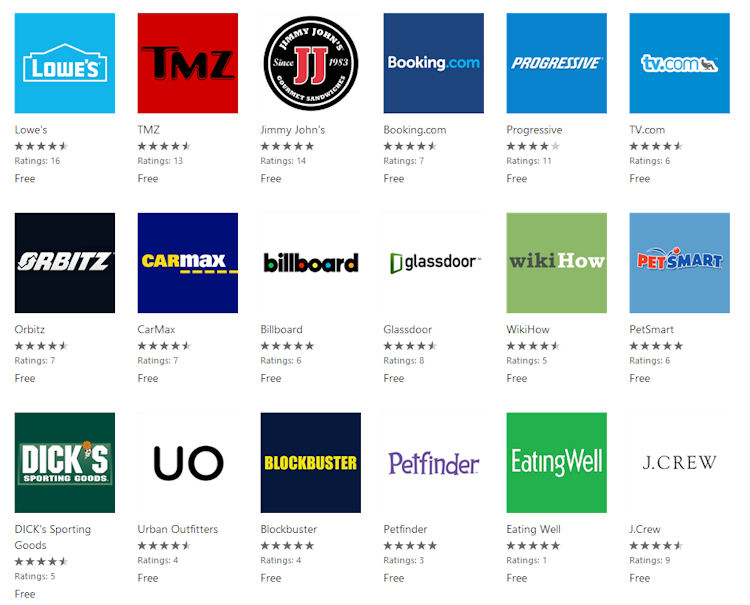The apps, which are little more than web shortcuts, do help fill out the Windows Phone Store, but do not really add any more value that a simple Internet Explorer bookmark. For example, the Blockbuster app opens up to the mobile version of the Blockbuster website, something than can be directly accessed via Internet Explorer via a simple URL or search.
It's worth noting that simple web bookmark apps are forbidden by the Windows Phone Store developer policies, but these apps avoid that distinction by using an Internet Explorer control (technically different, but it is really a grey area). Similarly, the de facto unsanctioned use of other companies brand names and logos is legally questionable, even if it is something that is common place in the smartphone app world. It's notable that Neowin reports that the Southwest Airlines and Atari Arcade app have already been removed, likely a result of direct request from trademark holders in question.


The one advantage the apps have is that they are separate apps to Internet Explorer. This makes it easier to switch away from and then back to the app if you are int erupted by another event (incoming calls, other app tasks, etc.). A dedicated app is also somewhat easier to pin to the Start screen (though you can also do this for a website).
Whether these merits, and the inclusion of the brand names within the Windows Phone Store listing, is a net positive when set against the inevitable backlash that such apps create is open to debate. The more tech aware tend to be critical of such apps, but it's notable that many of the more than 50 listed WebApps currently have app ratings significantly above average, indicating that at least some consumers are pleased by their addition to the Windows Phone Store.
Mary Jo Foley, writing on ZDNet, notes that the apps have been created by the WebApps team, which is part of the Windows Store team. All the apps have been published using the Microsoft WebApps publisher account, rather than the official Microsoft Corporation publisher account. A statement from Microsoft accepts that the apps are limited, but notes that the company hopes it will encourage the brands in question to publish native apps (presumably once they see the traction a simple web app is getting):
We are helping people access great mobile experiences on Windows Phone by creating pinnable Web Apps that show up in the app list. These are not a replacement for native apps. In most cases we hope that usage of the Web App will encourage the ISV to publish its own native app.
Whether the WebApps tactic pays off by Microsoft remains to be seen, but it does provde ammunition to both sides of the app gap argument.

